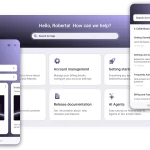Many Android users expected and hoped for a payment system for Androids similar to Apple’s “Apple Pay”. That’s exactly what they’re getting; Google announced plans for their new payment system called “Android Pay” at 2015’s Google IO, and it’s remarkably similar to Apple’s. Apple’s system was released in 2014 along with the iPhone 6 and 6 Plus. And Google is taking it head on in all of the ways that Google Wallet couldn’t. Both systems can be used at physical stores using NFC technology. It is found on the latest iPhone models and several Android models, and both can also be used for in app and website purchases. So which one is better?
Naturally, security is a major concern for any consumer considering making a purchase on their phone. Both Apple and Android Pay do a good job of protecting its users. When making a purchase, a single use token is sent to merchants as opposed to the user’s actual card number, this is done to protect against interception. Even if the token were to be intercepted, it would not be able to be used for unauthorized transactions or traced back to the actual card.
When paying however, Apple Pay requires its users to scan their fingerprint for verification, whereas with Android Pay, a user simply has to unlock their phone. As it stands now, using Apple Pay requires having iOS 8 or higher and either the iPhone 6 or 6 Plus. Android Pay is supported on all Android KitKat (4.4) or later versions, which means many more people can use it.
Although Apple and Google are fierce competitors, their payment systems are ultimately serving different markets (Apple users and Android users). Neither system is that much better than the other to justify making a switch, but now that Android users have their own payment system, it may further entice them to stay. Android Pay likely stands to provide the most competition for the yet to be released, Samsung Pay.






















